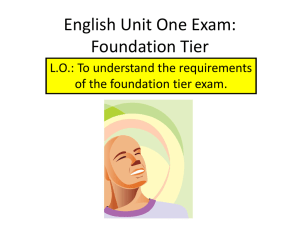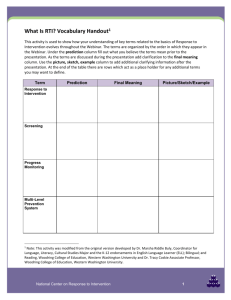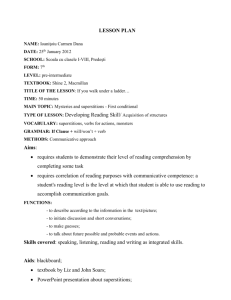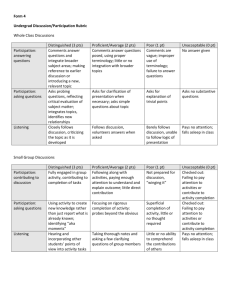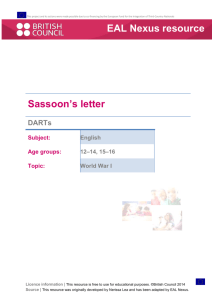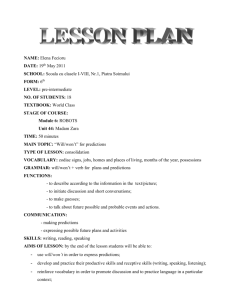Cognitive Content Dictionary: How to Steps
advertisement
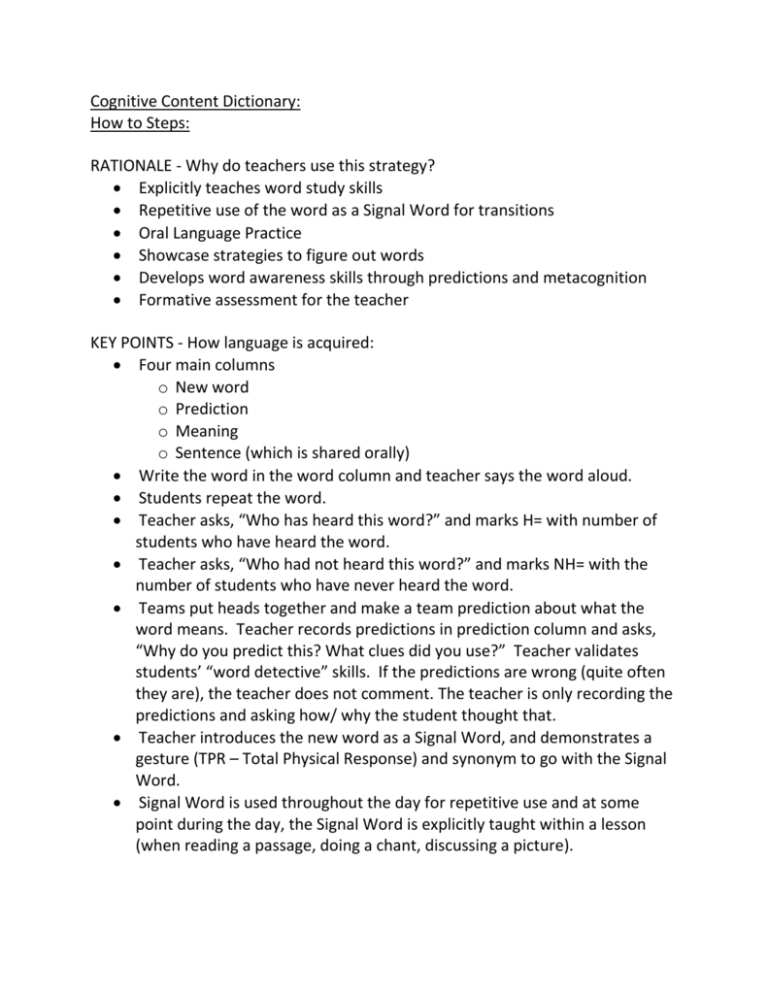
Cognitive Content Dictionary: How to Steps: RATIONALE - Why do teachers use this strategy? Explicitly teaches word study skills Repetitive use of the word as a Signal Word for transitions Oral Language Practice Showcase strategies to figure out words Develops word awareness skills through predictions and metacognition Formative assessment for the teacher KEY POINTS - How language is acquired: Four main columns o New word o Prediction o Meaning o Sentence (which is shared orally) Write the word in the word column and teacher says the word aloud. Students repeat the word. Teacher asks, “Who has heard this word?” and marks H= with number of students who have heard the word. Teacher asks, “Who had not heard this word?” and marks NH= with the number of students who have never heard the word. Teams put heads together and make a team prediction about what the word means. Teacher records predictions in prediction column and asks, “Why do you predict this? What clues did you use?” Teacher validates students’ “word detective” skills. If the predictions are wrong (quite often they are), the teacher does not comment. The teacher is only recording the predictions and asking how/ why the student thought that. Teacher introduces the new word as a Signal Word, and demonstrates a gesture (TPR – Total Physical Response) and synonym to go with the Signal Word. Signal Word is used throughout the day for repetitive use and at some point during the day, the Signal Word is explicitly taught within a lesson (when reading a passage, doing a chant, discussing a picture). The following day, (students at desks, sitting in teams) the teacher asks teams what they think the “Final Meaning” of the word is. Definitions are given orally. Teacher then tells students the Final Meaning of the word and records it in the “Meaning” column of the chart with a SKETCH for support. Teacher then engages the class in word study by breaking the word apart with descriptions of meaning of affixes, origin of the word, part of speech, etc. Teacher uses the word in an oral sentence and asks teams to put heads together and come up with an oral sentence using the word. Teams earn points for using the word correctly in an oral sentence. Teacher marks a “check mark” in the “Sentence” column. Introduce one word per day. At K-1, possibly one word each week. Teacher Tip: “Before I started each word, I would pencil in the Final Meaning and the Word Study very lightly on the grid. I would also pencil in the TPR (like fingers moving up in the air for “evaporation”) and the synonym. This saved a lot of time, and I wouldn’t go blank in the middle of class.” VARIATIONS – Students create the TPR for the Signal Word Teams can come up with a “Stumper Word” or a word that most students do not know from the instructional materials around the room. Teams can have a desk copy to do their own “Cognitive Content Dictionary” as a team task. Students can create their own “Cognitive Content Dictionary” as independent work. RESEARCH BASE: Shearer and Ruddell, Beck (Tiered Vocabulary), Marzano (nonlinguistic representation), James Asher (Total Physical Response)

